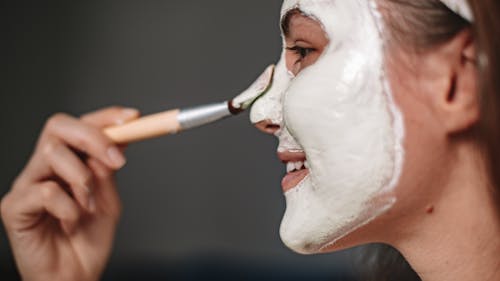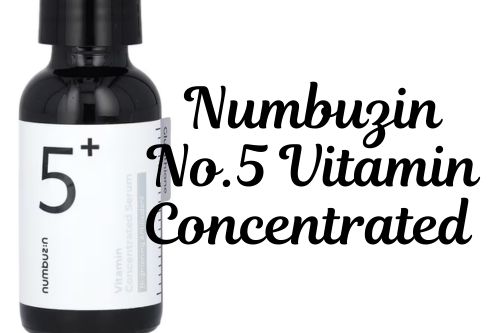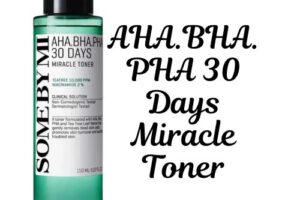Skincare Routine for [Combination Skin]
What is Combination Skin?
Combination skin is exactly what it sounds like—your skin has both oily and dry areas. This is a very common skin type that many people experience. The oilier parts of your face, known as the “T-zone” (your forehead, nose, and chin), tend to produce more oil, leading to shine, clogged pores, and possibly acne. Meanwhile, the areas around your cheeks, jawline, and hairline might feel dry, tight, or flaky, and sometimes even show signs of irritation.
In short, combination skin requires a balance of care. You’ll need to manage the excess oil in your T-zone while making sure to hydrate and nourish the drier areas. A tailored skincare routine for combination skin can help you keep everything in harmony, without over-drying or adding too much oil.
Now that you know what combination skin is, let’s dive into the best way to care for it!
Causes of Combination Skin
Combination skin is often a result of a mix of factors, and it can be influenced by both genetics and your lifestyle. Here’s a closer look at some common causes:
- Genetics: Just like many other skin types, combination skin can be inherited. If your parents had combination skin, you’re more likely to have it as well.
- Hormonal Changes: Hormonal fluctuations, such as those during puberty, pregnancy, or menstruation, can trigger an increase in oil production in the T-zone, leading to breakouts. These changes can also contribute to dry patches on other areas of the face.
- Weather: Seasonal changes can have a big impact on your skin. Hot, humid weather can make the oily areas of your face produce even more oil, while cold, dry air can leave the dry areas feeling tight and dehydrated.
- Improper Skincare: Using products that aren’t right for your skin type, such as harsh cleansers or overly rich moisturizers, can worsen combination skin. For instance, products that strip away oil can make the T-zone oilier, while overly heavy creams can make dry areas feel even drier.
Factors That Worsen Combination Skin
Several factors can make combination skin more difficult to manage, leading to imbalance or irritation. Here are some common culprits:
- Harsh Skincare Products: Using strong cleansers or exfoliators can strip the skin of its natural oils. This can dry out the already dry areas, while prompting the oilier zones (like the T-zone) to produce more oil to compensate.
- Irritating Ingredients: Products that contain harsh chemicals or fragrances can disrupt the skin’s balance. Ingredients like denatured alcohol can dry out the skin, while strong fragrances and abrasive scrubs can cause irritation, leading to inflammation or breakouts in both oily and dry areas.
Treating Combination Skin
Managing combination skin requires a balanced approach that addresses both the oily and dry areas without causing irritation. Here’s how to treat combination skin effectively:
- Cleanse: Start with a gentle, water-soluble cleanser that removes impurities without making your skin feel tight or greasy. For makeup removal, you can use a cleansing balm first to ensure all makeup is removed thoroughly.
- Clay Mask: Use clay or charcoal masks on oily areas (like the T-zone) to absorb excess oil without drying out the skin. These masks can help with oil control while keeping the skin hydrated in the dry zones.
- Toner: Apply a hydrating, soothing toner that contains antioxidants to help balance both the oily and dry areas of your face. Look for toners that are alcohol-free to avoid drying out your skin.
- Exfoliate: Use a BHA (salicylic acid) exfoliant, which is great for treating both excess oil in the T-zone and rough, dry patches on your cheeks. Avoid abrasive physical scrubs, as they can irritate sensitive areas and worsen the imbalance.
- Moisturize: For moisturizing, apply a lightweight, non-comedogenic moisturizer to your entire face. For drier areas, you can use a richer moisturizer or serum to provide extra hydration. Don’t forget to apply sunscreen every morning to protect your skin from UV damage.
- Makeup: When applying makeup, consider using different products for the dry and oily areas of your face. Hydrating moisturizers or primers work well for dry zones, while mattifying primers help control oil in the T-zone. Set oily areas with an oil-absorbing powder to keep shine under control throughout the day.
Which Products to Use for Combination Skin
When treating combination skin, it’s important to select products that cater to both the oily and dry areas of your face. Here’s how to choose the right products:
- For Oily Areas:
- Gel-based or liquid formulas are ideal for the T-zone (forehead, nose, and chin) where excess oil tends to accumulate. These formulas are lightweight and help control shine without clogging pores.
- Look for oil-free moisturizers or mattifying primers to control oil production while still providing enough hydration.
- For Dry Areas:
- More emollient products, such as rich moisturizers, serums, and oils, are perfect for the cheeks, jawline, and hairline where skin tends to be drier. These products help lock in moisture and keep the skin soft and hydrated.
- Choose moisturizers with ingredients like hyaluronic acid, glycerin, or ceramides that attract moisture and support the skin barrier.
Vitamin C for Combination Skin
Vitamin C is an excellent addition to your skincare routine, even for combination skin. It helps protect the skin from environmental stressors like pollution and UV rays, while also brightening the complexion. Since combination skin can be prone to dullness, Vitamin C helps even out skin tone and promote a healthy glow. It also helps in collagen production, supporting skin firmness and elasticity. Just be sure to use a lightweight, water-based Vitamin C serum to avoid overloading your skin.
Extreme Combination Skin
If your combination skin is more extreme, with a super oily T-zone and dry, flaky cheeks, it’s important to use targeted treatments. Here’s how you can manage these contrasting areas:
- For the oily T-zone, look for oil-absorbing products, such as clay-based masks, mattifying gels, or salicylic acid to reduce shine and keep pores clear.
- For dry, flaky cheeks, choose rich moisturizers or hydrating serums to restore moisture and calm any irritation. Don’t use heavy products on your T-zone, as they can clog pores and worsen oil production.
By being mindful of which products go where, you can manage the extremes of your combination skin while still achieving overall balance.
Dealing with Blemishes
Blemishes often appear in the T-zone due to excess oil production, especially in combination skin. To effectively treat breakouts:
- Use salicylic acid (BHA), which works deep within the pores to dissolve excess oil and clear out impurities. It also helps reduce the appearance of blackheads and whiteheads.
- Spot treatments containing salicylic acid or benzoyl peroxide can be applied directly to blemishes to reduce inflammation and promote faster healing without drying out the surrounding skin.
Key Tips for Managing Combination Skin
- Avoid Over-Cleansing: Over-cleansing can strip the skin of its natural oils, leading to inner dryness. When the skin is overly dry, it may produce more oil in an attempt to compensate, making the T-zone even oilier. Stick to cleansing twice a day — once in the morning and once at night — and choose a gentle, non-stripping cleanser.
- Be Mindful of Your Cleansing Routine: Not all areas of your face need the same treatment. For the T-zone, use a cleanser that targets oil control and prevents clogged pores, such as a gel-based or foaming cleanser. For dry areas, use a cream or hydrating cleanser to avoid further irritation and dryness.
- Targeted Product Application: For dry areas, apply richer creams or oils to nourish and protect those areas. Opt for products with hydrating ingredients like hyaluronic acid or ceramides. For the oily T-zone, focus on oil-controlling products like gel moisturizers or mattifying lotions to keep shine in check without over-drying.














Post Comment